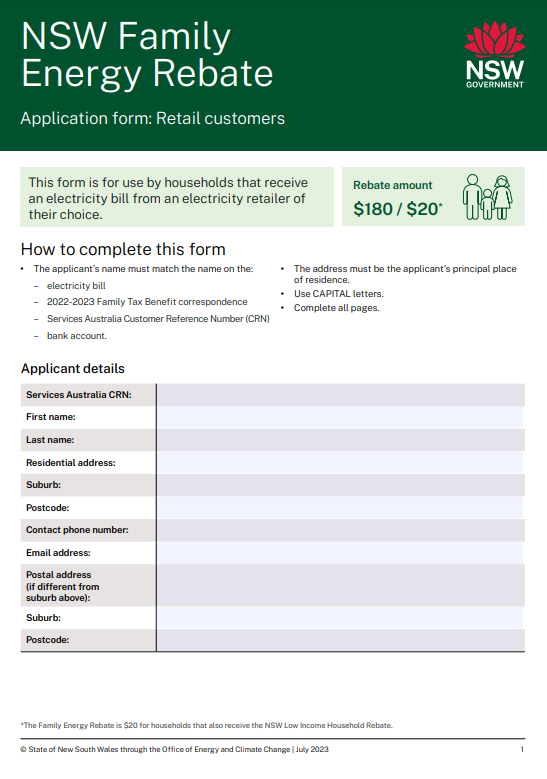Energy Rebate Form 2024 – Improving insulation and sealing is the most economical way to reduce energy use in your home. Your annual savings from this type of home improvement could reach $1,600. However, you are only eligible for rebates for a specific number of home improvements that reduce energy use. Your household’s income must not be higher than 150% of the median income in your area in order to be eligible. Use the Area Median Income Lookup Tool to see if your income is within this limit.
New light bulbs are eligible for a rebate.
An excellent way to save energy in your home is by using modern light bulbs. They work with dimmers and are more energy-efficient. Energy-saving bulbs come in a variety of varieties. To qualify for a rebate, you must purchase them from participating contractors. These contractors can help you choose the best bulbs, fixtures, and other energy saving products for your home or business.
Take advantage of these valuable rebates that not only put money back in your pocket but also contribute to a more energy-efficient building. With some participating contractors even offering instant discounts, the benefits are immediate. Just remember, though, that rebates do not apply to spare fixtures or lamps.
Upgraded light bulbs are one of the easiest ways to improve energy efficiency in your home. LED bulbs are a good option for this. You can also install dimmers and timers to further reduce your energy usage. Additionally, installing new energy-efficient lighting will improve your workplace’s ambiance and efficiency.
While replacing light bulbs is the easiest and most affordable way to complete an LED upgrade, there are other upgrades you can make. You can upgrade other components of the fixture, such as ballasts. LED rebate prices will stay flat in 2024, whereas the rebate prices for screw-in HID and linear tubes will increase slightly. It is also possible to replace the entire fixture with energy-efficient lighting. This will result in greater energy savings in the long run.
Homeowners can collect up to $1,600
The government is currently providing an amazing opportunity for homeowners to upgrade their houses with energy-efficient appliances. By taking advantage of this offer, not only can you enjoy the benefits of a more sustainable home, but you can also significantly lower your electric bills by up to $1,600. Additionally, rebates are also available for electric heat pumps and air-conditioning units, ensuring that you can save on energy costs throughout the year. Don’t miss out on this incredible program – remember, these rebates are available for up to eight years!
One of the most popular energy-saving improvements is insulation and sealing. While many homeowners are hesitant to do these renovations, they save on energy and money in the long run. Inflation Reduction Act will help homeowners with electric panel upgrades. There are some exceptions, but a qualified improvement will qualify for a 30% tax credit. For the rest of the year, homeowners can claim up to $1,200 in energy rebates.
The IRA provides tax credits for new heating and cooling systems and for other energy-efficiency measures. Heat pumps, for example, can save an average of $1,200 a year. The IRA also allocates $60 billion to help US clean energy manufacturing industries. Of that, $30 billion will be earmarked for solar and wind panel production tax credits and $10 billion for manufacturing facilities.
New electric vehicles can qualify for up to $7,500 in tax credits. These credits are also available for low and middle-income households.
Tax credits for solar equipment placed in service after January 1, 2024
The IRS offers a tax credit to consumers who place solar equipment in service after January 1, 2024. These tax credits are worth up to 26% of the cost of the solar system and can be carried over for five years. However, this credit does not apply to leases, power purchase agreements, or loans. You can also take advantage of this incentive if you install an energy storage system. But make sure you install the system and begin using it to qualify.
The Energy Policy Act of 2007 replaces the previous credit system. The new rules specify that taxpayers must meet certain requirements, such as domestic content, prevailing wage, and apprenticeship requirements. If these requirements are met, the taxpayers can claim a bonus credit of up to 100% of the available tax credits. Similarly, projects in certain communities may qualify for a bonus tax credit equal to 20% of the tax credit amount.
The new tax credit is meant to spur domestic SAF production and help close the price gap between Jet A and sustainable fuels. The tax credit is also available to solar and wind facilities. By 2024, the combined base and bonus ITC for a solar or wind facility will be worth 2.86 cents per kwh. The new law allows taxpayers to take advantage of this credit for projects that begin after January 1, 2024.
A battery storage system may also qualify for a federal tax credit. This can be retrofitted to an existing solar panel system or installed as part of a new one. A battery storage system is an excellent way to store solar power and use it at night or on rainy days. It also allows homeowners to use their solar energy system when wholesale prices spike.

